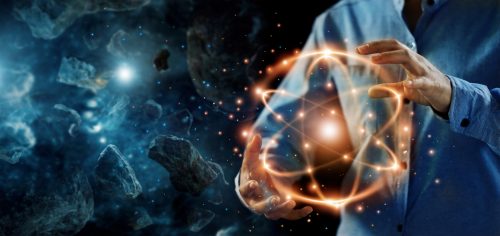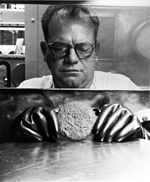
CWP Blog | CWP
Talk to Terrie: All in a Day’s Work
June 15, 2020
June 15, 2020
CWP
CWP Blog
All in a Day’s Work – Department of Energy Facilities Were Responsible for More Than Nuclear Power, Medicine, and Weapons.
It is common knowledge that the Department of Energy (DOE) and its predecessor agencies were responsible not only for developing nuclear weapons but also nuclear energy and medicine. What I was surprised to learn was that DOE impacted other areas of American life. Here are a few inventions that you may find interesting.
Glove Box
There was no such thing as a glove box before the 1940s. It was developed to reduce the risk of exposure to radioactive materials. Shortly afterward the medical community and industry realized that this set up could be used to help premature babies survive, handle and study moon rocks, and provide static-free environments for the electrical industry.
NASA
And speaking of moon rocks, the National Aeronautics and Space Administration (NASA) has a long history of working with DOE on various space projects. The System for Nuclear Auxiliary Power (SNAP), a nuclear power system built for use in outer space, was a cooperative effort between NASA and the Atomic Energy Commission (AEC) at the Santa Susana Field Laboratory. DOE also contributed to the Space Shuttle missions.
Interstate Highway
One reason for the development of the Interstate Highway System was because President Eisenhower was concerned that people would not be able to evacuate cities in the event of a nuclear attack. According to this article by the US Army.
In a July 1954 speech to the Governors’ Conference, Vice President Richard Nixon expressed concern over the “appalling inadequacies” of the existing U.S. road infrastructure and its inability to meet the needs for responding to a national emergency on the scale of atomic war. Nixon mentioned atomic or atomic war no less than 10 times in the speech.
Pinellas
The Pinellas Plant developed neutron generators for DOE. But their legacy also includes developing:
- Environmentally safe solvents to replace hazardous solvents for cleaning and coating applications.
- Ultra-clean, high-vacuum technologies.
- Hermetic seals between metals and glass, ceramics, or glass-ceramic composites.
- Equipment for generating and measuring high voltages.
- Sophisticated computer-aided engineering.
Brookhaven National Laboratory
In 1958, scientists from the Brookhaven National Laboratory built one of the first video games ever created, Tennis for Two. It was used to entertain visitors at the Lab’s annual visitors’ day. Two people played the electronic tennis game with separate controllers that connected to a computer and used an oscilloscope as a screen.
“Mr. Watson, come here – I want to see you.”
Lawrence Berkley National Laboratory
Carl Haber a physicist at the Berkeley Lab a way to digitally restore old audio recordings that are too fragile to play. This technology has allowed Haber’s team to restore a 128-year-old recording of Alexander Graham Bell’s voice, enabling people to hear the famed inventor speak for the first time
Los Alamos National Laboratory
In the 1960s, Los Alamos physicist Mack Fulwyler invented the cell sorter. This device is used to isolate different cells. It is still used today in medical labs where scientists study many diseases such as cancer.



